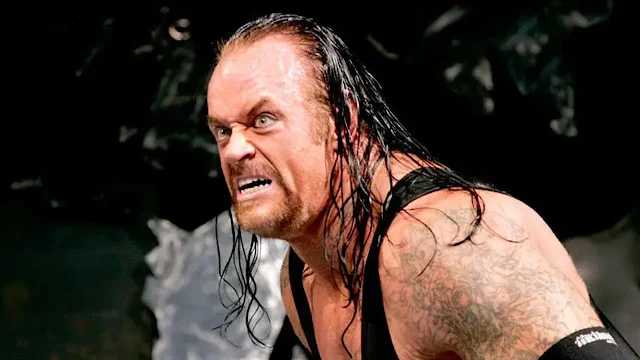The WWE Legacy: Exploring the Retirement of Wrestling Legends
In the world of WWE, retirement marks a bittersweet transition for the superstars who have thrilled millions in arenas and through television screens worldwide. For fans, seeing a beloved wrestler leave the ring is like bidding farewell to an era of unforgettable moments and electrifying performances. WWE legends’ retirements not only reflect the personal choices and health concerns of the athletes but also spotlight the end of chapters in wrestling history. Here, we dive into the journey of retirement for some iconic WWE stars, their impact, and what life looks like beyond the squared circle.
Why Wrestlers Retire from WWE
 |
| The WWE Legacy: Exploring the Retirement of Wrestling Legends |
The physical demands of professional wrestling are unparalleled, and the decision to retire often centers around the toll it takes on the body. WWE matches are intense, with superstars enduring rigorous training regimens and repeated high-impact maneuvers that eventually lead to wear and tear. Injuries are common in wrestling, and some, like neck or spinal injuries, can be life-altering. For instance, wrestlers like Edge and Stone Cold Steve Austin faced career-threatening injuries that initially forced them to step away from in-ring competition. Though Edge made an unprecedented comeback in 2020 after a nine-year retirement, his decision to return was closely monitored by medical professionals.
Apart from physical reasons, personal motivations and creative decisions influence retirements. Wrestlers like The Undertaker, who entertained fans for over 30 years, eventually felt the need to step away to preserve his legacy. He retired officially at Survivor Series 2020, exactly 30 years after his debut, marking an emotional farewell for fans who had grown up watching him. WWE respects these choices, often giving retiring superstars a grand send-off and a platform to connect with their fanbase one last time.
 |
| The WWE Legacy: Exploring the Retirement of Wrestling Legends |
Notable Retirements in WWE History
Throughout WWE’s history, several retirements have made headlines, leaving fans nostalgic for the stars who helped define wrestling entertainment. The retirement of Shawn Michaels in 2010 stands out as a pivotal moment. Known as “The Heartbreak Kid,” Michaels was celebrated for his charisma and technical prowess. His decision to retire after WrestleMania 26 was motivated by a desire to go out on a high note, and his last match against The Undertaker is considered one of the greatest in WWE history.
Another monumental farewell was that of Ric Flair, the "Nature Boy," who retired in 2008 after a storied career spanning multiple wrestling organizations and decades. Flair’s send-off at WrestleMania 24, where he lost to Shawn Michaels, remains one of the most iconic and emotionally charged moments in WWE history. Flair’s departure from the ring was more than just the end of an era—it was a nod to the golden age of wrestling.
Edge’s retirement and subsequent return also deserve a mention. His initial retirement in 2011 due to severe neck injuries shocked the wrestling world. Edge was in the prime of his career when he was forced to step away, leaving fans yearning for more. However, in 2020, he made a miraculous comeback at the Royal Rumble, proving that sometimes retirement isn’t the end but rather a new beginning.
Life After WWE Retirement
For many wrestlers, retirement doesn’t mean leaving the WWE family altogether. Some, like Triple H, transition into backstage roles, helping to shape the future of WWE. Triple H, a legendary wrestler in his own right, now serves as WWE’s Chief Content Officer and was instrumental in developing WWE NXT, a training ground for new talent. His move from the ring to the boardroom highlights how WWE supports its retirees by offering them roles in production and creative departments.
 |
| The WWE Legacy: Exploring the Retirement of Wrestling Legends |
Others choose to explore opportunities outside wrestling. Dwayne “The Rock” Johnson and John Cena have transitioned into successful Hollywood careers, becoming global superstars beyond WWE. Batista, too, pursued acting and landed major roles in franchises like Marvel’s Guardians of the Galaxy. Their success stories show that WWE wrestlers can reinvent themselves and thrive in other entertainment fields.
For some, retirement brings the chance to engage with fans in new ways. Undertaker, once fiercely private, now attends fan conventions and has a podcast, giving him a fresh platform to connect with his audience. Bret Hart and Ric Flair regularly make guest appearances, sharing insights and stories from their illustrious careers.
WWE’s Tribute to Retired Legends
WWE celebrates its retired superstars with Hall of Fame inductions, a yearly event that immortalizes wrestlers’ contributions to the sport. Being inducted is the ultimate honor, a tribute to those who elevated WWE’s status as the world’s leading wrestling promotion. Hall of Famers like Stone Cold, Hulk Hogan, and Lita enjoy an enduring bond with the organization, appearing at special events and WrestleMania.
You may also like
"Rhea Ripley and Damian Priest: WWE's Ultimate Badass Duo"
Retired wrestlers remain central to WWE’s legacy, embodying the resilience, passion, and charisma that make WWE a beloved phenomenon. Even in retirement, their presence endures through Hall of Fame spots, nostalgic fan memories, and the inspiring paths they’ve blazed for future WWE stars. As WWE continues to evolve, it will forever carry the impact of these legends who gave everything to entertain the world.
Comments
Post a Comment